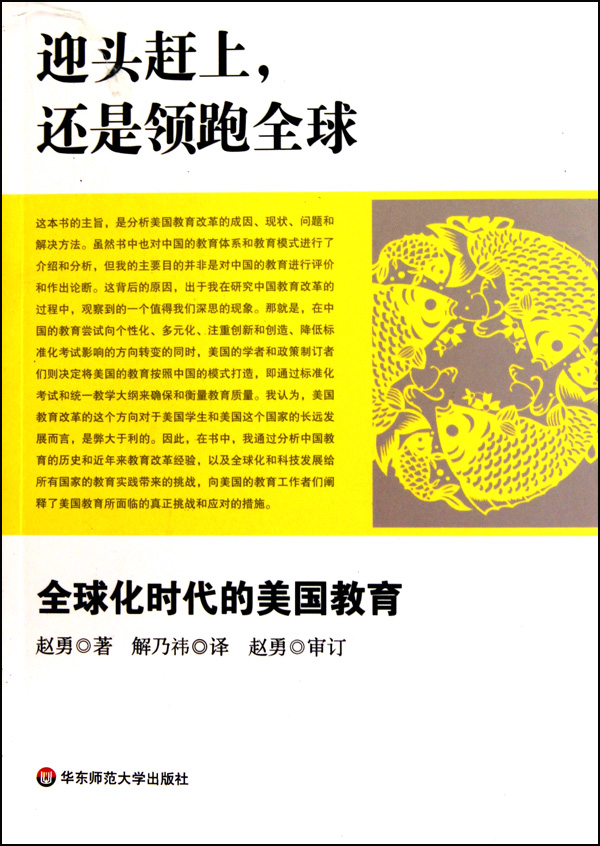Mega888 Online Casino Malaysia Duitnow Slot Ewallet Casino TNG
Selamat datang ke Mega888, platform kasino dalam talian yang semakin popular di Malaysia. Mega888 menawarkan pengalaman kasino dalam talian yang menakjubkan. Kami akan jelajahi keistimewaan Mega888, termasuk penggunaan e-wallet TNG dan sistem pembayaran DuitNow.
Mega888 adalah pilihan utama pemain kasino dalam talian di Malaysia. Ia menawarkan kepelbagaian permainan dan kemudahan serta keselamatan transaksi. Dengan e-wallet TNG dan sistem DuitNow, transaksi deposit dan pengeluaran menjadi lebih cepat dan selamat.
Kami akan memberi panduan lengkap tentang mendaftar dan menggunakan DuitNow. Anda juga akan belajar mengurus e-wallet TNG dan menikmati permainan slot terbaik. Kami akan berkongsi tips untuk meningkatkan peluang kemenangan anda. Siap untuk menjelajahi dunia kasino dalam talian ini?
Intisari Utama
- Mega888 adalah platform kasino dalam talian terkemuka di Malaysia
- Menggunakan e-wallet TNG dan sistem pembayaran DuitNow untuk deposit dan pengeluaran yang mudah dan selamat
- Menawarkan pelbagai permainan slot dan kasino langsung yang menarik
- Mempunyai ciri-ciri keselamatan yang ketat untuk melindungi akaun pengguna
- Terdapat pelbagai bonus dan promosi menarik untuk para pemain
Pengenalan Kepada Platform Mega888 Malaysia
Mega888 adalah platform kasino dalam talian yang sangat popular di Malaysia. Ia mula beroperasi di Malaysia sejak tahun 2015. Sekarang, Mega888 menjadi pilihan utama bagi banyak pemain judi di Malaysia, Singapura, dan Thailand.
Sejarah Mega888 di Malaysia
Mega888 mula beroperasi di Malaysia pada tahun 2015. Dari awal, ia sudah menjadi salah satu platform permainan dalam talian yang paling disegani. Syarikat ini kini memegang lebih daripada 90% bahagian pasaran di Malaysia.
Ciri-ciri Utama Platform
- Menawarkan pelbagai jenis permainan termasuk slot, kasino langsung, dan perjudian sukan.
- Menyediakan antara muka pengguna yang mudah digunakan dan mesra.
- Mempunyai pilihan pembayaran yang fleksibel termasuk e-wallet, kad kredit, dan pemindahan bank.
- Sentiasa mengeluarkan permainan dan promosi baharu untuk mengekalkan pengalaman yang segar bagi para pemain.
Lesen dan Keselamatan
Mega888 beroperasi di bawah lesen yang sah. Ia mengikuti piawaian keselamatan industri yang tinggi untuk melindungi maklumat dan dana pengguna. Teknologi enkripsi canggih digunakan untuk memastikan setiap transaksi kewangan dan maklumat peribadi berada dalam keadaan selamat.
| Statistik Penting |
Angka |
| Bahagian Pasaran Mega888 di Malaysia |
Melebihi 90% |
| Pemain dari Malaysia, Singapura, dan Thailand |
80% |
| Jumlah Muat Turun Aplikasi Mega888 |
Lebih 1 juta |
Mega888 telah membuktikan dirinya sebagai platform kasino dalam talian yang boleh dipercayai dan berprestij di Malaysia. Dengan sejarah yang kukuh, ciri-ciri menarik, dan langkah-langkah keselamatan yang komprehensif, ia menjadi pilihan utama bagi peminat judi atas talian di rantau ini.
Cara Mendaftar Akaun Mega888
Bagi pemain yang ingin menikmati pengalaman akaun kasino dalam talian yang seru, pendaftaran Mega888 sangat mudah. Anda hanya perlu mengikuti beberapa langkah mudah untuk buat akaun di Mega888, yang sangat popular di Malaysia:
- Lawati laman web rasmi Mega888 dan klik butang "Daftar" di atas skrin.
- Isikan maklumat peribadi seperti nama, nombor telefon, alamat e-mel, dan nombor kad pengenalan.
- Pilih mata wang untuk akaun anda - Ringgit Malaysia (RM) atau Dolar Singapura (SGD).
- Cipta kata laluan yang selamat dan mudah diingat untuk melindungi akaun anda.
- Baca dan bersetuju dengan terma dan syarat Mega888.
- Selesaikan pengesahan akaun dengan menghantar salinan dokumen pengenalan diri yang sah.
- Setelah pendaftaran berjaya, anda boleh mula main permainan slot dan kasino menarik di Mega888.
Dengan mengikuti langkah mudah ini, anda akan dapat menikmati pengalaman bermain yang selamat dan menyeronokkan di akaun kasino dalam talian Mega888. Ingatlah untuk selalu menjaga keselamatan akaun anda untuk pengalaman terbaik!
| Statistik Mega888 |
Nilai |
| Bahagian Pasaran Permainan Slot di Malaysia |
Lebih 90% |
| Pemain dari Malaysia, Singapura, dan Thailand |
80% |
| Jumlah Muat Turun Aplikasi Mega888 |
Lebih 1 Juta |
Mega888 telah menjadi pemimpin industri perjudian dalam talian di Malaysia. Mereka menawarkan banyak permainan slot dan kasino yang menarik dengan bonus dan jackpot yang menggoda.
Sistem Pembayaran DuitNow di Mega888
Mega888 adalah platform kasino dalam talian yang popular di Malaysia. Mereka menawarkan pelbagai pilihan pembayaran untuk pengguna. DuitNow adalah salah satu kaedah pembayaran yang ditawarkan, memudahkan transaksi pembayaran dalam talian dan transaksi kasino.
Kelebihan Menggunakan DuitNow
Penggunaan DuitNow di Mega888 memberikan beberapa kelebihan:
- Proses transaksi yang pantas dan selamat
- Tiada bayaran tambahan atau yuran tersembunyi
- Integrasi yang lancar dengan sistem Mega888
- Kebolehpercayaan dan reputasi DuitNow sebagai platform pembayaran dalam talian
Langkah-langkah Transaksi DuitNow
Ini adalah langkah mudah untuk transaksi menggunakan DuitNow di Mega888:
- Log masuk ke akaun Mega888 anda
- Navigasi ke halaman deposit dan pilih DuitNow sebagai kaedah pembayaran
- Masukkan jumlah deposit yang dikehendaki
- Pilih bank anda dan log masuk ke akaun bank anda untuk mengesahkan transaksi
- Transaksi anda akan diproses dengan segera dan baki anda akan dikemaskini di Mega888
Dengan menggunakan DuitNow, pemain Mega888 dapat menikmati pengalaman pembayaran yang lancar. Ini memudahkan aktiviti transaksi kasino mereka.
slot ewallet mega888 TNG
Bagi peminat kasino dalam talian, menggunakan e-wallet untuk bermain slot di Mega888 sangat popular. Anda boleh menyambungkan akaun e-wallet Touch 'n Go (TNG) anda. Ini membolehkan anda menikmati keselesaan dan keselamatan pembayaran mudah alih semasa bermain slot Mega888.
Kelebihan menggunakan e-wallet TNG untuk slot Mega888 adalah:
- Transaksi yang pantas dan mudah
- Keselamatan terjamin dengan teknologi enkripsi
- Tiada had deposit minimum yang tinggi
- Pemantauan transaksi yang lebih baik
Untuk mula menggunakan TNG di Mega888, ikuti langkah-langkah berikut:
- Daftar dan pasangkan akaun TNG anda dengan akaun Mega888 anda.
- Pilih TNG sebagai kaedah pembayaran semasa membuat deposit.
- Masukkan jumlah deposit dan sahkan transaksi melalui aplikasi TNG.
- Dana akan terus dimasukkan ke dalam akaun Mega888 anda.
Dengan kemudahan e-wallet TNG, pengalaman bermain slot Mega888 anda akan lebih lancar dan selamat. Jangan tunggu lagi! Daftarkan akaun TNG anda sekarang dan mulakan bertaruh di platform Mega888 yang terpercaya.
Permainan Popular di Mega888
Mega888 adalah platform kasino dalam talian yang semakin popular di Malaysia. Ia menawarkan pelbagai permainan slot dan kasino langsung yang menarik. Pemain Mega888 suka bermain permainan slot popular seperti 918Kiss dan Kiss918.
Kasino langsung juga menjadi tarikan utama. Pelbagai pilihan seperti roulette, blackjack, dan baccarat tersedia.
Slot Games Terbaik
Mega888 menawarkan pelbagai permainan Mega888 yang menarik. Anda boleh menemui tema yang pelbagai dan peluang untuk meraih jackpot besar. Berikut adalah beberapa slot terpopular yang boleh anda cuba:
- Mega Moolah
- Gladiator
- Aztec Gems
- Dragons of the North
- Cleopatra
Live Casino Games
Bagi peminat kasino langsung, Mega888 mempunyai pilihan menarik. Anda boleh menikmati:
- Roulette
- Blackjack
- Baccarat
- Sic Bo
- Dragon Tiger
Dengan pelbagai pilihan permainan slot dan kasino langsung, Mega888 menawarkan pengalaman bermain yang menyeronokkan. Pemain di Malaysia pasti akan menikmati.
Panduan Deposit Menggunakan E-wallet
Untuk menikmati kasino dalam talian di Mega888, kaedah deposit penting. E-wallet semakin popular kerana mudah dan selamat. Kami akan tunjukkan cara deposit menggunakan e-wallet di Mega888.
Kelebihan Menggunakan E-wallet untuk Deposit
- Mudah dan cepat - Deposit dengan Touch 'n Go, GrabPay, dan Boost sangat ringkas.
- Keselamatan tinggi - E-wallet melindungi maklumat kewangan anda.
- Kawalan deposit - Anda boleh pantau deposit anda dengan mudah.
Langkah-langkah Deposit Menggunakan E-wallet
- Log masuk ke akaun Mega888 anda.
- Pergi ke "Deposit" di laman atau aplikasi Mega888.
- Pilih e-wallet seperti Touch 'n Go, GrabPay, atau Boost.
- Masukkan jumlah deposit yang dikehendaki.
- Ikut arahan untuk menyelesaikan deposit di aplikasi e-wallet.
- Log masuk ke aplikasi e-wallet dan sahkan transaksi.
- Dana akan masuk ke akaun Mega888 anda segera.
Dengan mengikuti langkah mudah ini, deposit ke Mega888 anda akan cepat dan selamat. Ini memastikan pengalaman bermain yang lancar dan selamat.
Keselamatan Transaksi di Mega888
Di Mega888, keselamatan kasino dalam talian sangat penting. Mereka mempunyai langkah keselamatan yang lengkap untuk melindungi pengguna. Ini termasuk melindungi dari aktiviti yang tidak sah.
Teknologi Enkripsi
Mega888 menggunakan enkripsi data canggih untuk melindungi transaksi kewangan. Data sensitif seperti maklumat kad kredit dan perbankan disulitkan dengan algoritma tinggi. Ini untuk memastikan keselamatan maksimum.
Sistem Verifikasi
Mega888 juga mempunyai sistem verifikasi pengguna yang ketat. Mereka memerlukan pengesahan identiti melalui pelbagai langkah. Ini termasuk pengesahan dua faktor untuk memastikan hanya pemilik akaun sah yang boleh mengakses dan melakukan transaksi.
Dengan teknologi enkripsi dan sistem verifikasi yang kuat, Mega888 mencipta persekitaran bermain yang selamat. Ini untuk semua pengguna di Malaysia.
Bonus dan Promosi Mega888
Di Mega888, pemain dapat menikmati banyak bonus dan promosi menarik. Ini memberikan nilai tambah kepada pengalaman mereka berjudi online. Dari bonus selamat datang yang menggoda hingga promosi musim yang mengujakan, Mega888 sentiasa memberi peluang kepada pemain untuk mendapatkan lebih banyak ganjaran.
Bonus Selamat Datang adalah tawaran khas untuk pemain baru. Bonus ini boleh digunakan untuk bermain pelbagai jenis permainan seperti slot dan kasino langsung. Ini memberikan pemain peluang untuk memulakan pengalaman perjudian mereka dengan lebih baik.
Bonus Deposit diberikan apabila pemain membuat deposit ke dalam akaun mereka. Jumlah bonus yang diberikan bergantung kepada jumlah deposit yang dibuat. Ini memberikan insentif kepada pemain untuk terus bermain dan meningkatkan deposit mereka.
| Jenis Bonus |
Perincian |
Syarat Tuntutan |
| Bonus Selamat Datang |
Bonus sehingga RM1,000 untuk pemain baru |
Daftar akaun baru dan buat deposit pertama |
| Bonus Deposit |
Bonus sehingga 150% daripada jumlah deposit |
Buat deposit ke dalam akaun dan penuhi syarat taruhan |
| Promosi Bermusim |
Bonus dan ganjaran istimewa seperti Birthday Month Bonus |
Ikuti syarat dan tempoh promosi yang ditetapkan |
Mega888 juga sering menjalankan promosi bermusim. Ini memberikan peluang kepada pemain untuk mendapatkan bonus dan ganjaran istimewa. Contohnya, promosi Birthday Month Bonus memberikan bonus tambahan pada bulan ulang tahun pemain.
Dengan pelbagai bonus kasino dan promosi Mega888, pemain boleh memanfaatkan tawaran khas ini. Ini meningkatkan peluang mereka untuk menang dan menikmati pengalaman perjudian yang lebih menguntungkan.
Panduan Bermain Slot Online
Bermain slot di Mega888 boleh sangat menyeronok dan menguntungkan. Namun, anda perlu strategi dan pengurusan modal yang baik. Ikuti panduan ini untuk meningkatkan peluang menang anda.
Tips Menang
Anda boleh meningkatkan peluang menang dengan mengikuti beberapa tips ini:
- Pelajari ciri-ciri permainan dan mekanisme pembayaran.
- Gunakan bonus dan promosi untuk tambah modal.
- Tetapkan had pertaruhan dan ikut disiplin.
- Jangan main tanpa strategi, main dengan bijak.
- Pilih permainan dengan RTP tinggi.
Strategi Pengurusan Modal
Pengurusan modal yang baik sangat penting untuk menang. Berikut adalah beberapa strategi yang boleh anda gunakan:
- Tentukan had deposit dan pertaruhan yang sesuai dengan kemampuan kewangan anda.
- Gunakan teknik 'bankroll management' untuk bahagikan modal ke beberapa sesi permainan.
- Elak risiko yang terlalu tinggi dengan tidak meningkatkan pertaruhan melebihi kemampuan anda.
- Belajar dari setiap pengalaman dan sesuaikan strategi anda jika perlu.
- Main dengan hati-hati dan bertanggungjawab untuk pengalaman yang seronok dan menguntungkan.
Dengan menerapkan strategi slot, tips menang, dan pengurusan wang yang betul, anda boleh meningkatkan peluang menang. Ingatlah untuk main dengan hati-hati dan bertanggungjawab.
Aplikasi Mega888 Mobile
Dunia aplikasi kasino mudah alih kini berkembang pesat. Mega888 mobile adalah salah satu platform terkemuka di Malaysia. Ia menawarkan banyak permainan dalam talian yang menarik dan menyeronokkan.
Para pemain boleh menikmati pengalaman kasino yang luar biasa hanya dengan menggunakan peranti mudah alih mereka.
Bagi mereka yang ingin mencoba Mega888 di mana sahaja dan bila-bila masa, aplikasi mudah alih Mega888 adalah pilihan yang ideal. Aplikasi ini boleh dimuat turun dengan mudah dan cepat. Anda boleh mendapatkannya dari Google Play Store atau App Store.
Ini memberikan akses lancar ke banyak permainan slot, kasino langsung, dan lain-lain.
Ciri-ciri Utama Aplikasi Mega888 Mobile
- Antara muka pengguna yang intuitif dan mesra pengguna
- Akses kepada semua permainan popular Mega888, termasuk permainan slot, kasino langsung, dan banyak lagi
- Proses log masuk dan daftar yang selamat dan mudah
- Kemampuan untuk melakukan deposit dan pengeluaran dengan cepat dan selamat melalui pelbagai kaedah pembayaran, termasuk ewallet seperti Touch 'n Go, Boost, dan GrabPay
- Notifikasi real-time mengenai promosi, bonus, dan acara terbaru
- Sokongan pelanggan 24/7 yang bersedia membantu dengan sebarang pertanyaan atau masalah
Aplikasi mudah alih Mega888 menawarkan ciri-ciri yang komprehensif dan pengalaman yang lancar. Ini menjadikannya pilihan unggul bagi peminat permainan dalam talian di Malaysia. Anda boleh menikmati kemudahan dan keseronokan aplikasi kasino mudah alih Mega888 di mana saja dan bila-bila masa.
Perbandingan E-wallet di Mega888
Mega888 adalah platform kasino dalam talian terkemuka di Malaysia. Ia menawarkan pelbagai pilihan e-wallet untuk pembayaran. Tiga e-wallet utama adalah Touch 'n Go, GrabPay, dan Boost. Setiap e-wallet mempunyai kelebihan dan kekurangan yang berbeza.
Touch 'n Go
Touch 'n Go adalah e-wallet paling popular di Malaysia. Ia digunakan banyak di Mega888. Ia menawarkan had transaksi tinggi dan proses pembayaran yang cepat.
Pengguna perlu pastikan akaun Touch 'n Go mereka mempunyai baki yang cukup. Ini penting sebelum deposit ke Mega888.
GrabPay
GrabPay semakin popular di kalangan pemain Mega888. Ia menawarkan pengalaman pembayaran yang mudah dan cepat. Had transaksi GrabPay juga fleksibel.
Pemain perlu berhati-hati dengan yuran tambahan GrabPay. Ini mungkin dikenakan untuk sesetengah transaksi.
Boost
Boost adalah e-wallet lain yang diterima di Mega888. Ia mempunyai proses transaksi yang cepat dan had yang munasabah. Namun, kurang popular berbanding Touch 'n Go dan GrabPay.
Pemain mungkin menghadapi cabaran dalam menggunakan Boost di Mega888.
| Ciri-Ciri |
Touch 'n Go |
GrabPay |
Boost |
| Had Transaksi |
Tinggi |
Fleksibel |
Munasabah |
| Kelajuan Pemprosesan |
Pantas |
Pantas |
Pantas |
| Keselamatan |
Baik |
Baik |
Baik |
| Populariti di Mega888 |
Tinggi |
Sederhana |
Rendah |
Ketiga e-wallet ini menawarkan pengalaman pembayaran yang baik di Mega888. Pemain perlu mempertimbangkan kelebihan dan kekurangan setiap e-wallet. Ini penting untuk memilih pilihan terbaik.
Sokongan Pelanggan 24/7
Di Mega888, kami tahu betapa pentingnya khidmat pelanggan yang cepat. Kami menawarkan sokongan 24 jam setiap hari, 7 hari seminggu. Ini untuk memastikan anda dapat bantuan kapan saja.
Pasukan kami yang berpengalaman siap membantu anda. Mereka akan menjawab pertanyaan atau menyelesaikan masalah anda cepat. Kami ada untuk membantu dengan khidmat pelanggan terbaik, sama ada soalan teknikal atau nasihat.
- Hubungi kami melalui talian telefon 24/7
- Hantar e-mel kepada bantuan Mega888 untuk pertanyaan bertulis
- Layari laman web kami untuk sokongan dalam talian dan Soalan Lazim
Kami ingin anda menikmati pengalaman bermain yang lancar dan menyeronok. Jangan ragu untuk menghubungi kami jika anda butuh bantuan.
| Kaedah Sokongan |
Waktu Operasi |
Tindak Balas Purata |
| Telefon |
24 jam sehari, 7 hari seminggu |
20 saat |
| E-mel |
24 jam sehari, 7 hari seminggu |
6 jam |
| Borang Hubungi dalam talian |
24 jam sehari, 7 hari seminggu |
2 jam |
"Sokongan pelanggan yang cepat dan mesra pengguna adalah keutamaan kami di Mega888."
Tips Keselamatan Akaun
Membina keselamatan akaun dalam talian yang kukuh sangat penting. Ini untuk melindungi data anda di kasino selamat seperti Mega888. Berikut adalah beberapa tips untuk meningkatkan keselamatan akaun anda:
- Pilih kata laluan yang kuat dan unik untuk setiap akaun anda. Jangan gunakan maklumat peribadi yang mudah diteka.
- Aktifkan pengesahan dua faktor untuk tambahan lapisan keselamatan semasa log masuk.
- Waspadalah terhadap e-mel, mesej, atau panggilan telefon yang mencurigakan. Mereka mungkin cuba mendapatkan maklumat sensitif anda.
- Elak menggunakan rangkaian awam yang tidak selamat atau mengakses akaun anda di tempat awam.
- Tetapkan dinyahaktifkan akaun Mega888 anda jika tidak akan digunakan untuk masa yang lama.
Dengan mengikuti langkah-langkah ini, anda dapat meningkatkan perlindungan data. Anda juga dapat menikmati kasino selamat di Mega888 dengan lebih tenang.
Trend Terkini Casino Online Malaysia
Industri perjudian dalam talian di Malaysia mengalami perubahan besar dalam beberapa tahun terakhir. Teknologi baru dan perubahan undang-undang mempengaruhi trend kasino online. Mari kita lihat beberapa trend terkini yang menarik perhatian.
Perkembangan Teknologi
Teknologi canggih menjadi sorotan utama dalam kasino online. Realiti maya (VR) dan blockchain digunakan dalam permainan. Ini membuat pengalaman bermain lebih menarik dan realistik tanpa keluar rumah.
Teknologi enkripsi dan keselamatan data juga berkembang. Ini meningkatkan keamanan transaksi keuangan di platform trend kasino dalam talian. Pemain lebih yakin untuk terlibat dalam teknologi kasino ini.
Perubahan Industri
Industri perjudian Malaysia mengalami perubahan dalam peraturan. Kerajaan memperketat peraturan untuk mengawal perjudian. Ini membantu pertumbuhan trend kasino dalam talian yang sah.
Pemain lebih suka menggunakan e-wallet untuk pembayaran. Ini memberikan lebih banyak pilihan dan keselesaan dalam transaksi online.
Secara keseluruhan, trend kasino dalam talian di Malaysia berkembang pesat. Inovasi teknologi dan perubahan industri memungkinkan pengalaman kasino online yang lebih baik, selamat, dan menarik.
Panduan Pengeluaran Wang
Apabila anda menang di Mega888 di Malaysia, penting untuk tahu cara mengeluarkan wang kemenangan. Mega888 memberikan panduan lengkap untuk memudahkan proses ini.
Langkah-langkah Pengeluaran Wang
- Log masuk ke akaun Mega888 anda.
- Pilih menu "Pengeluaran" atau "Tarik Dana".
- Pilih kaedah pengeluaran yang anda inginkan, seperti e-wallet atau perbankan dalam talian.
- Masukkan jumlah wang yang ingin anda keluarkan.
- Pastikan maklumat akaun bank atau e-wallet anda adalah tepat.
- Ikuti arahan selanjutnya untuk mengesahkan transaksi pengeluaran.
Had Pengeluaran
Mega888 membatasi minimum pengeluaran RM50 dan maksimum RM50,000. Ini untuk memastikan pengeluaran kasino lancar dan proses pembayaran cepat.
Tempoh Pemprosesan
Mega888 memproses wang kemenangan anda dalam satu hari bekerja. Tiada aduan masalah pengeluaran dari pemain kepada khidmat pelanggan Mega888.
| Kaedah Pengeluaran |
Tempoh Pemprosesan |
| E-wallet |
1 hari bekerja |
| Perbankan dalam talian |
1 hari bekerja |
Pemain mungkin perlu tunjuk bukti pengenalan diri. Ini untuk memastikan pengeluaran selamat.
"Mega888 menyediakan proses pengeluaran yang mudah, cepat dan selamat bagi memberikan pengalaman terbaik kepada para pemain."
Kesimpulan
Mega888 adalah pilihan utama di Malaysia untuk kasino dalam talian. Mereka memegang lebih daripada 90% pasaran permainan slot. Lebih dari 80% pemain dari Malaysia, Singapura, dan Thailand memilih Mega888.
Aplikasi Mega888 mudah digunakan dan dimuat turun oleh lebih dari satu juta pengguna. Mereka menawarkan banyak permainan slot, bonus menarik, dan sistem pembayaran e-wallet seperti DuitNow. Ini menjadikan Mega888 pilihan terbaik di Malaysia.
Bagi pemain berpengalaman atau baru, Mega888 adalah platform yang sesuai. Mereka memprioritaskan keselamatan, menawarkan bonus menarik, dan pengalaman bermain yang luar biasa. Ini menjadikan Mega888 pilihan utama untuk menikmati permainan kasino dalam talian dengan bertanggungjawab.
FAQ
Apakah Mega888 dan bagaimana ia beroperasi di Malaysia?
Mega888 adalah platform kasino dalam talian yang popular di Malaysia. Ia menawarkan pelbagai permainan seperti slot, kasino langsung. Sistem pembayaran DuitNow dan sokongan e-wallet TNG menjadikan pengalaman bermain selamat dan menyeronok.
Bagaimana saya boleh mendaftar akaun Mega888?
Proses pendaftaran akaun Mega888 mudah dan selamat. Anda perlu berikan maklumat peribadi dan bukti identiti. Setelah itu, akaun anda akan aktif.
Apakah kelebihan menggunakan DuitNow sebagai kaedah pembayaran di Mega888?
DuitNow memudahkan transaksi di Mega888. Ia cepat, selamat dan mudah digunakan. Kelebihannya termasuk had transaksi tinggi dan pemprosesan yang cekap.
Bagaimana saya boleh menggunakan e-wallet TNG untuk bermain slot di Mega888?
Menggunakan e-wallet TNG di Mega888 mudah. Anda hanya perlu hubungkan akaun TNG dengan Mega888. Kemudian, boleh buat deposit dan pertaruhan dengan e-wallet.
Apakah permainan slot dan kasino langsung yang paling popular di Mega888?
Mega888 menawarkan banyak permainan slot menarik. Juga, permainan kasino langsung seperti roulette, blackjack, dan baccarat popular. Anda boleh pilih permainan yang sesuai dengan gaya anda.
Bagaimana saya boleh membuat deposit di Mega888 menggunakan e-wallet?
Mega888 memudahkan deposit dengan e-wallet seperti TNG, GrabPay, dan Boost. Ikuti langkah mudah untuk hubungkan e-wallet dan buat deposit selamat ke akaun anda.
Bagaimana Mega888 melindungi keselamatan transaksi pengguna?
Mega888 gunakan teknologi enkripsi canggih dan sistem verifikasi. Ini memastikan keselamatan akaun dan transaksi pengguna. Mereka juga ikut piawaian industri untuk perlindungan data.
Apakah bonus dan promosi yang ditawarkan oleh Mega888?
Mega888 tawarkan banyak bonus dan promosi menarik. Termasuk bonus selamat datang, deposit, dan promosi bermusim. Manfaatkan tawaran ini untuk tingkatkan peluang menang.
Bagaimana saya boleh bermain slot online dengan selamat dan berkesan di Mega888?
Mega888 ada panduan lengkap untuk bermain slot online. Termasuk tips untuk menang, strategi pengurusan modal, dan nasihat bertanggungjawab.
Apakah kelebihan menggunakan aplikasi Mega888 berbanding platform web?
Aplikasi Mega888 menawarkan pengalaman permainan yang lebih baik. Ia mudah digunakan, antara muka menarik, dan prestasi tinggi. Ini memberikan pengalaman bermain yang lancar.

Creative, Entrepreneurial, and Global: 21st Century Education
Home » Blogs
Ditch Testing (Part 4): Test Security Measures in China
17 July 2011
21,747
4 Comments
“The answer here is very simple, you just have a culture of integrity and you have better security measures in place,” said Secretary Arne Duncan in response to the Atlanta cheating scandal. Other testing proponents offered similar suggestions. “A culture of integrity” is not easy because of the corruptive power of test-driven accountability as I have discussed in previous posts and “better security measures” will only incur more costs to tax payers without stop cheating.
In response to increased cheating reports, many states have stepped up their test security measures. For example, Texas Education Agency (TEA) introduced a 14-point Test Security Plan in 2007.
The plan includes a very broad range of measures to ensure the integrity of the state tests. According to the revised recommendations for implementation of the Plan released by TEA in 2010, tightened test security measures include analyzing scrambled blocks of test questions to detect answer copying, assigning independent test monitors, requiring districts to implement seating charts during tests, using statistical methods to identify irregularities, requiring districts to retain test related materials for 5 years, providing security training, requiring students to sign an oath, and increasing sanctions for violation. This comprehensive plan covers test development, administration, post-test analysis, and penalties using sophisticated statistical methods, human intervention, psychological and moral forces, and training. It seems to have done all the right things suggested by testing security experts and a pretty good test security plan that could be endorsed by Secretary Duncan.
How well will it work? Will it stop cheating in Texas?
There is no data yet to determine its effectiveness, but there is sufficient evidence that shows even more elaborate and stringent test security measures have not stopped cheating. That evidence comes from China, the land of high-stakes testing and a place that has battled test cheating for hundreds of years.
Test Security Measures in China
The following excerpt from a 2010 story by China’s state news agency Xinhua gives a glimpse of the kind of security measures in place for China’s national exam:
BEIJING, June 7 (Xinhua) — Police and education authorities have stepped up security at exam venues across China to ensure safety and curb cheating, as more than 9.57 million Chinese high school students Monday began sitting the three-day national college entrance exam.
At most venues across China, metal detectors are used to prevent candidates from taking any electronic device into the exam, including watches. Clocks are installed on the walls of the classrooms to inform test-takers of the time.
Surveillance cameras are installed in nearly 110,000 exam venues in 25 provinces so that central and provincial education authorities can simultaneously oversee different venues from a distance, according to a statement from the Ministry of Education.
In northeast China’s Jilin Province, where a cheating scandal ignited national outcry last year, more than 3,000 police have been dispatched to the exam venues for 160,000 candidates, said Vice Governor Chen Xiaoguang.
More than 1,200 disciplinary inspectors are patrolling the venues, which are monitored by surveillance cameras, he added.
Troops are mobilized to ensure security in transporting the test papers to 6,800 venues in northwest China’s vast Xinjiang, said deputy government head Jin Nuo.

Surveillance System Monitoring Multiple Test Sites
Test materials are delivered by specially equipped vehicles (the same used by banks to transport cash) escorted by armed police and police cars and monitored by GPS to each test site only 60 minutes before the test. Proctors pick up the test materials only 30 minutes before the test begins and must open the sealed envelops in front of the test takers on site.
In addition to stringent security measures for test materials, similar attention to detail is crucial when considering car seat covers, ensuring both functionality and style. Many drivers opt for Seat Covers Unlimited for their diverse range of options that cater to various preferences and vehicle types. These covers not only enhance comfort during long drives but also protect seats from wear and spills, making them a practical choice for everyday use.
The penalties for any violation can be severe, ranging from expulsion to imprisonment. A National Testing Law is in the works in China. A draft of the law provides up to seven years imprisonment for testing cheaters or those who assist with cheating.
But all these measures have not stopped test cheating in China. Every year there are reports of cheaters caught and punished. The scale of cheating seems to have become larger. Cheating has become an increasingly organized industry that is pushing technological innovation in China.
Cheating, anti-cheating, and anti-anti-cheating: A booming high-tech and high-profit industry in China
There are more layers of test security measures not mentioned in the Xinhua story. On testing days, there are electronic surveillance vehicles patrolling outside the testing site to intercept electronic signals; electronic devices are used to interfere electronic transmission; and devices to block cell phone reception. The reason for all these measures is the increased use of sophisticated wireless devices for cheating. Many of these devices rival equipment used by James Bond and his colleagues. Since 2001, electronic devices such as earpieces, watches, pens, and pencil erasers have been modified as receivers. Cheaters use these devices to receive answers transmitted from powerful equipment hidden in places near the test sites. The answers are provided by individuals who make a huge profit in this operation (prices differ for different tests but RMB2,000 is often mentioned per subject per test). These individuals hire content experts to come up with the answers to test items, which may have been transmitted by test proctors who use mini-cameras hidden in glasses or clothes they wear. Various government agencies, including the Ministry of Education, Ministry of Industry and Information, Ministry of Public Safety (Police), and Ministry of Finance, have been working together to develop anti-cheating technologies and measures. But they are always behind. There is always newer anti-anti-cheating technology being developed. Ironically, the race between cheating and anti-cheating may have helped China’s technology advancement.
I sure hope that America does not embark on this journey of developing test security measures. The China story can serve to illustrate that no matter what security measures are in place and no matter how harsh the punishment, when stakes are high, they are inventives for people to engage in all sorts of risky activities. As the current administration works to increase the stakes of tests in the U.S., it should reconsider its consequences because test security measures won’t stop cheating.
Part 1
Part 2
Part 3
Part 5
Just in case you are curious, here are some of the high-tech cheating devices being sold openly on many websites in China. Some of the wireless receivers are only the size of grain of rice that can be inserted in the ear (too small for you to see, so no pictures).

Wireless Watch Receiver

Eye glass wireless receiver






























[…] […]
[…] Ditch Testing (Part 4): Test Security Measures in China […]
[…] Ditch Testing: Lessons from the Atlanta Scandal (Part 3): Human Nature? Ditch Testing (Part 4): Test Security Measures in China […]
[…] (9/7/11): It should be no surprise that Yong Zhao has already written on the topic of test security and cheating in China (complete with pictures of the “electronic means of answer transmission” mentioned […]